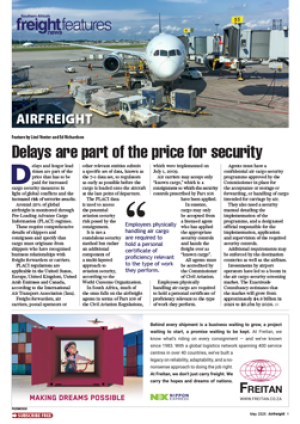With only 7.8% of General Freight Business (GFB) in the Western Cape moved by rail in 2017, road freight dominance is one of the key areas of focus in the newly launched Western Cape Freight Strategy. Speaking at the monthly Transport Forum held in Cape Town recently, Mario Brown, provincial director for transport policies and strategies, said several challenges existed in moving more freight from road to rail but ultimately a modal shift was required. “The poor condition of certain rail sections leading to capacity constraints, the historically poor access to the rail network because of underinvestment in branch lines, loading stations and intermodal facilities are challenging,” said Brown. Capacity constraints for certain cargo types at the ports of Cape Town and Saldanha Bay and the condition of some rural unsurfaced roads also posed issues, he added. Modal rebalancing was a key target of the strategy, he said. This did not mean that there was a move to replacing road with rail, but rather introducing intermodal freight transport solutions where commodities were transported using the most suitable mode. According to Brown
implementation of this strategy sooner rather than later is critical. “The geographical location of the Western Cape, being furthest from markets and sources of goods, increases the urgency of intervention,” he said. “Achieving sustainable freight transport delivery takes time, and acting now could mitigate the risk of future freight transport crises.” Brown said the Western Cape’s logistics costs amounted to R47.2 billion per year or 16.5% of South Africa’s total freight costs. Other major challenges in the province that the strategy hoped to addressed were the high number of freight-related crashes, the prevalence of overloading and overload control avoidance, and the negative impact of abnormal loads and dangerous goods on road infrastructure. “The strategic objective is to improve capacity, condition and interconnectivity of freight transport infrastructure to meet demand in a sustainable manner while also improving freight network access,” he said. “Our goal is to reduce the number of freightrelated, heavy vehicle crashes in the province, reduce the proportion of overloaded vehicles and the average overload size, and reduce the negative impact of general freight, abnormal load and dangerous goods movement on traffic flow and infrastructure.”
CAPTION: Our goal is to reduce the number of freight-related heavy vehicle crashes in the province. – Mario Brown

